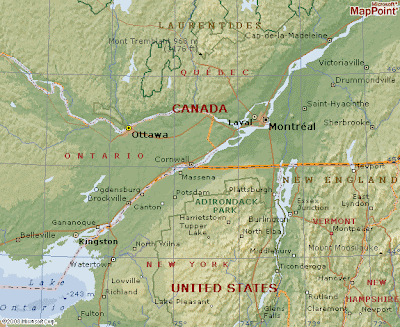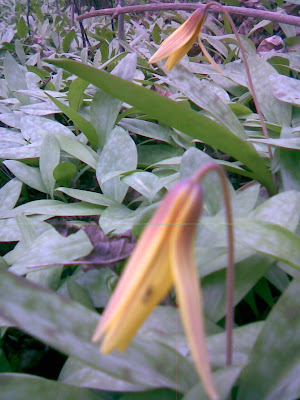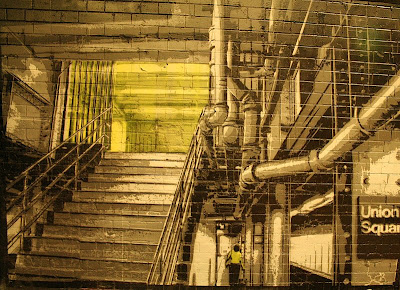 "I think that in human evolution it has never been as necessary to have this substance LSD. It is just a tool to turn us into what we are supposed to be."
"I think that in human evolution it has never been as necessary to have this substance LSD. It is just a tool to turn us into what we are supposed to be." Albert Hofman
Hofmann was disappointed when his discovery was removed from commercial distribution. He remained convinced that the drug had the potential to counter the psychological problems induced by "materialism, alienation from nature through industrialisation and increasing urbanisation, lack of satisfaction in professional employment in a mechanised, lifeless working world, ennui and purposelessness in wealthy, saturated society, and lack of a religious, nurturing, and meaningful philosophical foundation of life".
Albert Hofman died last week at the age of 102. Albert Hofman was a Swiss scientist best known for having been the first to synthesize, ingest and learn of the psychedelic effects of lysergic acid diethylamide (LSD) and became the first person in the world to experience a full-blown "acid trip" – that was on April 19 1943, which became known among aficionados as "Bicycle Day" as it was while cycling home from his laboratory that he experienced the most intense symptoms.
By 1965 more than 2,000 papers had been published offering hope for a range of conditions from drug and alcohol addiction to mental illnesses of various kinds. But the fact that the chemical was cheap and easy to make left it open to abuse, and from the late 1950s onwards, promoted by Dr Timothy Leary and others, LSD became the recreational drug of choice for western youth.
An outbreak of moral panic, combined with a number of accidents involving people jumping to their deaths off high buildings in the belief that they could fly, led governments around the world to ban LSD. Research also showed that the drug, taken in high doses and in inappropriate settings, often caused panic reactions. For certain individuals, a bad trip could be the trigger for full-blown psychosis.
Hofmann was disappointed when his discovery was removed from commercial distribution.
Hofmann laid some of the blame at the door of Dr Timothy Leary. In his autobiography he described meeting Leary in 1971 in the snack bar at Lausanne railway station. Hofmann began by voicing his regret that Leary's experiments had effectively killed off academic research into LSD and took Leary to task for encouraging its recreational use among young people.
Leary was unabashed. "He maintained that I was unjustified in reproaching him for the seduction of immature persons to drug consumption," Hofmann recalled. Leary further insisted that American teenagers "with regard to information and life experience, were comparable to adult Europeans" and were able to make up their own minds.
Canada and LSD:
Shortly after World War II, English psychiatrist Humphrey Osmond began studying the potential use of psychedelic drugs in psychiatry. He found that these drugs antagonized adrenaline receptors, inducing a temporary psychosis, perhaps even a model psychosis. According to Dyck, Osmond was amazed at the drugs’ ability to “suspend his sense of logic and comfort” by altering his perception of reality. If we accept schizophrenia as a distortion of perception, then experiencing drug-induced psychosis could allow psychiatrists great insight into mental illness.
“A doctor often wishes he could enter the illness and see with the madman’s eyes, hear with his ears, and feel with his skin,” explained Osmond at the time. “This may seem an unlikely privilege but it is available to anyone who is prepared to take a…minute amount of…lysergic acid.”
Meanwhile, on another continent, a psychiatrist in Saskatchewan, Abram Hoffer, was examining LSD’s biochemical effects. He discovered that the LSD molecule contains nicotinic acid.
“[Nicotinic acid] blocks the metabolism of certain enzymes…appearing to cause changes in perception, changes in effect, and changes in thinking,” Hoffer explained at the time.
By controlling the levels of this blocking agent, Hoffer controlled these psychosis-like symptoms. These studies eventually lead him to propose treating schizophrenic patients with nicotinic acid, commonly known as niacin or vitamin B3.
An interesting
medicinal use for LSDMore than 4 decades after the original studies, Dr. Erika Dyck has exposed some surprising facts about studies conducted with LSD as a treatment for alcoholism.
Dr Erika Dyck of the University of Alberta has recently published her research on LSD treatment for alcoholism studies, performed in Saskatchewan during the 1950’s and 1960’s by Humphry Osmond, Abram Hoffer, Colin Smith, and Sven Jensen. This incredible paper brings to light some fascinating studies, and generates even more questions for those brave enough to ask.
Dr Dyck provides a substantial background on psychiatrist Humphry Osmond, whom she credits with being a pioneer in the acceptance of alcoholism as a disease based on biochemical causes. After moving from England to Weyburn, Saskatchewan, Osmond met Abram Hoffer, who became a close associate in his research efforts with d-lysergic acid diethylamide (LSD) and other hallucinogens like mescaline.
The professor continues on to explain how the researchers came to the idea of treating alcoholism with this drug, based on the similarities between the effects of LSD and alcohol withdrawal delirium tremors (commonly known as the “dt’s”). As trials progressed with alcoholic patients, the researchers realized that there was another aspect to the experience other than physical that they had not considered – that of a personal and sometimes spiritual awakening that was reported during the patient’s LSD session. Follow-up to treatment confirmed that this had a lasting, positive effect on the subjects. The relatively informal first group of studies by Osmond and Hoffer resulted in a roughly 50/50 success rate of abstinence for a follow up period of six months.
The study’s close work with the organization Alcoholics Anonymous is also discussed in Dr. Dyck’s work. In an attempt to follow up with patients and utilize as much feedback as possible, Hoffer and Osmond found local groups helpful and even quite supportive of clinical trials. It is also noted that co-founder Bill Wilson was a proponent of the treatment, especially in regard to its implications regarding the spiritual experience.
Dr. Dyck cites two additional researchers that entered the scene after additional pressure was placed to provide more empirical evidence in favor of the treatment method. The first of these was conducted by psychiatrist Colin Smith in 1955, on two dozen patients. The results of this concluded that half remained about the same, a quarter were improved, and the other quarter had shown significant improvement, classified as exhibiting “complete abstinence from alcohol for the duration of the follow-up period…with changes in lifestyle, including more stable personal relationships and regular employment.”
Obituary in Telegraph.
A couple other of my posts related to this subject:
Farms, Drugs and Mental HealthLyle Thurston









































